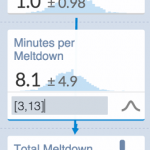Moneyball and the Cloud
March 20, 2015

Billy Beane, you may also know, is the final manager of the Oakland Athletics baseball franchise and the hero of the very best-promoting guide Moneyball. Later, his character used to be performed by means of Brad Pitt within the movie adaptation of the book. monetary writer Michael Lewis portrayed Beane as someone who perceived not best the outdated nature of baseball’s conventional efficiency warning signs (batting averages, runs batted in, and win/loss percentages for pitchers, amongst others), but additionally the unsuitable and complacent conventional wisdom that has built up around these numbers over the last hundred years. through rebuilding his operations on new metrics developed by using eggheads who liked the sport, he was ready to bring together a crew and make it to the playoffs on Oakland’s restricted funds, beating big market groups with payrolls that dwarfed Oakland’s.
in a similar way, Dupont analysis, the antique way of economic analysis, can be around 100 years previous and showing more than a few indicators of age. yet it’s most emblematic ratio—return on investment (ROI)—nonetheless holds sway.
essentially the most disruptive innovation in corporate IT just lately has been the introduction of cloud-primarily based IT products and services as a utility, particularly for managing internet presence. The paradigm remains to be new enough that many folks have retained some skepticism about turning over a big share of on-premise IT work to outsiders. just a few years ago Oracle’s Larry Ellison famously brushed aside cloud computing services as mere hype and buzzword compliance. but today his firm is closely invested in them.
in the knowledge age, after all, the information you’ve collected, created, geared up, and used could be the very sine-qua-non of what you are promoting. until now, turning it over to strangers has always gave the impression more than slightly risky. however nowadays exercising the cloud choice would free firms to center of attention more on their core competency. these days, as firm IT departments are beginning to really feel the stretch of maintaining with a all of a sudden evolving IT landscape, the appeal of the cloud grows.
the place the talk over cloud vs on-premise continues, ROI comparisons make up the majority of the arduous quantity comparisons in white papers and in the business press. Wringing their palms, fence sitters point to ROI comparisons and allege that via taking a look ahead three to five years the net current value (NPV) of capital costs made now to construct out and administer an organization’s web presence onsite will probably be roughly identical to the NPV of yearly cloud contracts over that very same three-to-5-yr time frame. “No clear benefit to the cloud,” they say. (my very own figures confirmed a transparent hard quantity benefit to contracting cloud services and products however a short blog is not any situation to match line gadgets carefully. Nor in a roundabout way would that make contributions to the point I need to make.)
After this restricted bottom-line comparability, usually of the NPV of capital expenses vs. operational expenses, many of the dialogue turns anecdotal. Many companies who’ve made the transfer to the cloud have complained in regards to the confusion in switching and in their IT department’s new function, about mismatches between products and services reduced in size and the desires of the company, in regards to the pricing schemes, the provision of technical enhance, and finally of the learning curve total. the opposite side counters that the various assumed advantages are either now not realized to start with or are tough to account for and measure: scalability, agility, flexibility, and the liberty to concentrate and practice one’s core abilities to the mission without distractions.
in some way however, arguments for persisted on-premise administration of net services faded in gentle of the fact that dedicated cloud provider providers can muster each economies of scale and a spread and depth of talents that IT departments more and more can’t in shape and sooner or later will haven’t any hope of competing with. The cloud’s advantages of on-demand adaptability and scalability backed through a couple of region redundancy, prime-side security, and expertise in administration and regulatory adherence deal with concerns that you could now go on to a cloud supplier and which they will be happy to suppose. that is what they do.
as an instance, if you happen to concern about your ability to scale up immediately to accommodate a marketing campaign that will exceed your expectations or have issues concerning the capital funding required to handle again-up and reflect websites (together with the accompanying elevated payroll), a cloud provider provider is also the reply. No undertaking wants to be recognized for inept management of its online presence. today’s digital consumer has too many choices and is simply too impatient to stay round.
in the meantime the criticism that traditional strategies of chance diagnosis are developing quick within the data age remains to be heard. Former Fed chairman and well-known numbers wonk Alan Greenspan complained that the plain productivity explosion engendered by way of the new digital technologies used to be now not being mirrored in our traditional econometrics. lately there remains to be reserve in relying as confidently as we have now prior to now on conventional industry analytics to weigh opportunities on this fast-moving digital era. somewhere in academia though, formidable business school profs are working to offer the new analytics and make their reputations.
within the meantime, whether this new world of industry so heavily reliant on data and the know-how that creates it, approaches it, and provides it will want its personal Billy Beane to steer us to new, truer indications of IT-brought price remains to be seen. but perhaps we can take in the lesson he offers in recognizing the shortcomings of older strategies and their attendant conventional wisdom by using realizing real ROI within the cloud as a utility possibility.
Digital & Social Articles on industry 2 community
(295)














